Recent headlines have revealed a number of mass casualty events involving vehicles. Notable vehicle-based mass casualty incident examples include the 2003 Santa Monica farmers market crash; 2017 attacks in Charlottesville, Stockholm, London, Barcelona, Jerusalem, and Melbourne; the 2018 Toronto van attack; and the attack last November in Waukesha, Wisconsin. The Wikipedia page for vehicle-ramming attacks lists more than 100 separate incidents in the last decade alone, making it clear this type of event is becoming an increasingly common threat to pedestrians. Whether it’s accidental or deliberate, the bottom line is, if you’re not injured, how might you be able to attend to those who are?
The Mass Casualty Incident Scenario
Situation Type: You witness a vehicle ramming mass casualty incident
Your Crew: You and your spouse
Location: Your hometown
Season: Spring
Weather: Normal
The Setup
Imagine you visit your downtown area with your spouse on a Saturday to attend a local farmer’s market. In order to make room for vendors’ stands and the accompanying influx of pedestrian traffic, two full blocks of the street have recently been cordoned off by city officials. The closed-off areas are delineated by thin, waist-high plastic barricades to indicate to vehicles at nearby intersections that this area is off-limits. As is typical of a Saturday afternoon, there are many shoppers and restaurant patrons walking through the area, in addition to the farmers’ market attendees. Small tables have been set up on the sidewalk near some of the more popular booths, so you and your wife take a seat at one of them to eat a quick meal.
The Complication
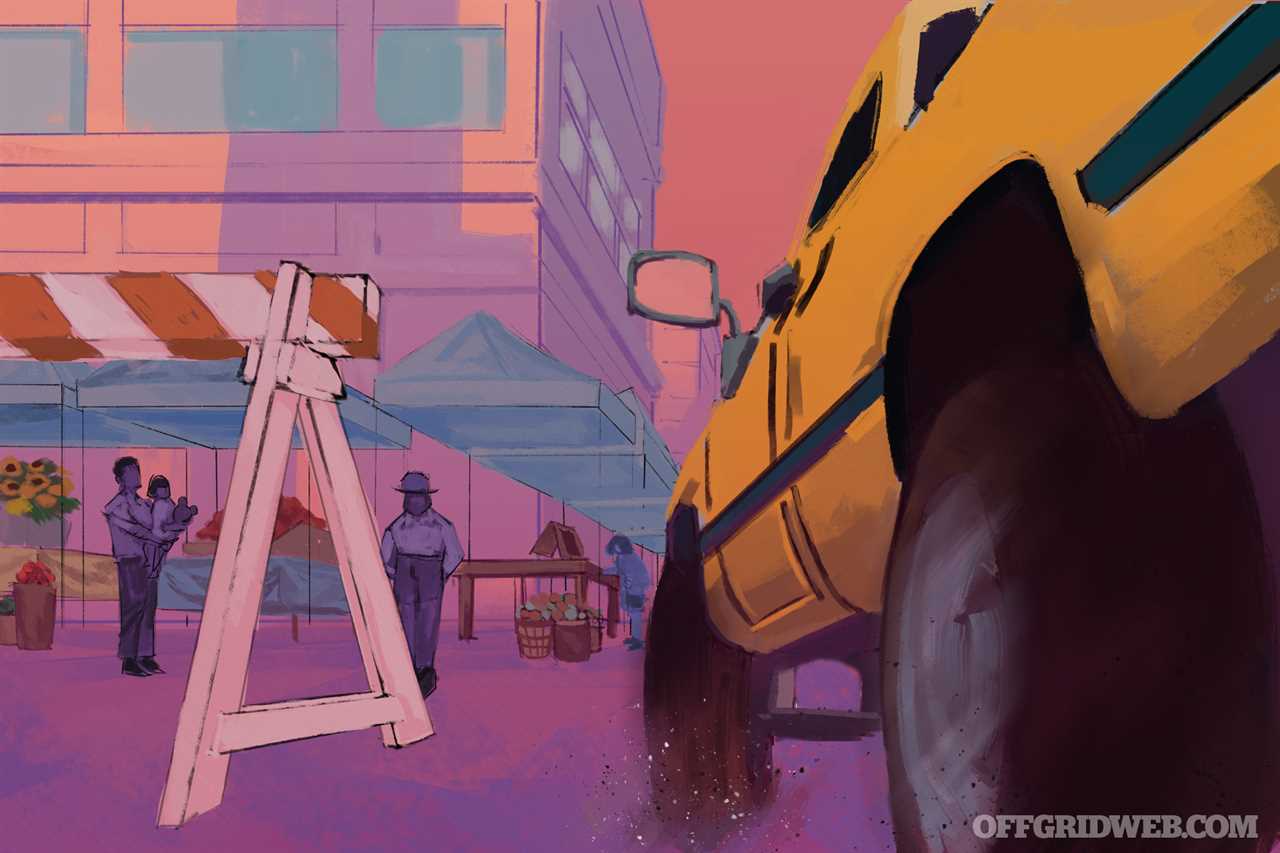
After about five minutes of enjoying your food, your day seems to be going well. Without warning, you hear the screeching of tires out of sight from where you’re seated. Patrons in the street begin to turn in the direction of the commotion. The noise of an accelerating engine gets louder. Suddenly you see a pickup truck barreling down the opposite side of the street. It plows through one of the other seating areas, smashing into at least three tables of diners. People begin to scream and run frantically in every direction. The driver reverses course and takes down a mother and child trying frantically to outrun it. The pickup starts coming toward you and runs over an elderly couple before slamming into some of the people on the sidewalk about 10 feet from you.
The vehicle then reverses a second time, accelerates down the street, and runs over at least two more people as it speeds out of the cordoned-off area from the same direction it entered. What do you do? Are there steps you can take to attend to the injured individuals? How do you prioritize who to attend to and triage appropriately? Should you try to enlist others to help? Could a follow-up attack be imminent as well?
Search-and-Rescue Technician Andy Schrader’s Approach
What just happened? What’s going to happen next? Getting over the shock of a vehicle plowing through a crowd, as with the shock of any emergency, starts with controlling my breathing and taking stock of the situation. Next comes that first decision to act and putting that foot forward. As the saying goes, if you’re looking around and thinking to yourself that someone should do something — congratulations! You’ve just been nominated.
I’d start by assessing the scene and confirming my own safety and that of my immediate family. It’s so easy to get tunnel vision in a mass casualty incident like this and lose focus on your surroundings. This is where mental awareness and breathing exercises make a difference in how you’ll respond:
- Feel all the points of your body that are making contact with the ground — if you’re standing, it might just be your two feet.
- Breathe in through your nose and out through your mouth. If you can get in two or three good breaths and keep doing this, you’ll have a much better chance of functioning effectively.
Train to Respond — Not React
For me, personally, I place a high value on forcing my mind to keep running even while my body is stressed. To train on this, I bring logic or math puzzle books with me to the gym, or sometimes actual physical puzzles or little Tetris boards. During my rest periods between sets, I work on basic math problems or puzzles. This helps my body get used to the idea that even when my cardiovascular system is redlined, I still need to be able to think, analyze, and make decisions.
If you’re going to try this out on your own, you can’t necessarily expect to solve complicated puzzles since your brain won’t be functioning at its highest level. Normally, I start with puzzles designed for kids ages 8 to 12 and work my way up from there. If the puzzle thing sounds silly, ask yourself: How are you training your body to respond when you’re winded? By putting your hands on your knees or blankly staring up at the ceiling or sky? We don’t rise to the occasion — we sink to the level of our training.
I remember one of my first times working with my friends at Marion County (FL) Fire Rescue, when we responded to a drug overdose victim quickly dying in front of us. One of the medics asked me to grab him another pair of gloves out of the rescue (ambulance) — a fairly simple request. As I leapt up into the rescue, I remember seeing the walls of the vehicle spin around me, as I was still processing the vision of the patient’s face contorting as he went into seizures. I spun around probably three or four times, wasting precious seconds, only having the vaguest idea of what I was looking for. I simply couldn’t think straight — my body was floundering around like a hooked fish flopping on a dock, all movement and no action. I’d become worse than useless — the team actually would’ve been more effective if I hadn’t been there at all. That day taught me the lesson to slow down. Breathe. Often, you’re better off walking instead of running, if it allows you to stay in the proper gear and think on your feet.
So, think first, then act. Look around you, all 360 degrees. Is the vehicle coming back around for another pass? Or if the vehicle is stopped because it rammed into something, what’s happening there? It doesn’t even have to be an intentional terrorist act for a vehicle to kill or maim pedestrians. These events can and often do occur as a result of sudden medical events or operator error. An elderly driver might mistake the gas pedal for the brake (it happens all the time). An impatient driver might drive up on the sidewalk to pass by stopped vehicles in the road, as happened last year in Florida where two kids were killed. Or a driver could experience a stroke, heart attack, or seizure. No matter the cause, the results of a mass casualty incident are the same, and it’s worthwhile to consider this event as well within the realm of possibility.
The First 10 Seconds
Is the scene safe? Take a second to look around and understand what happened. Was this just an accident, maybe from an elderly driver? Or was this an intentional attack that might involve a second phase? If it’s the former and you’re removing the vehicle occupants, be careful and make sure the engine is off. Confirm that the parking brake is engaged, and that the transmission isn’t in gear. You don’t want the vehicle to roll away and cause more casualties.
Triage and Treatment
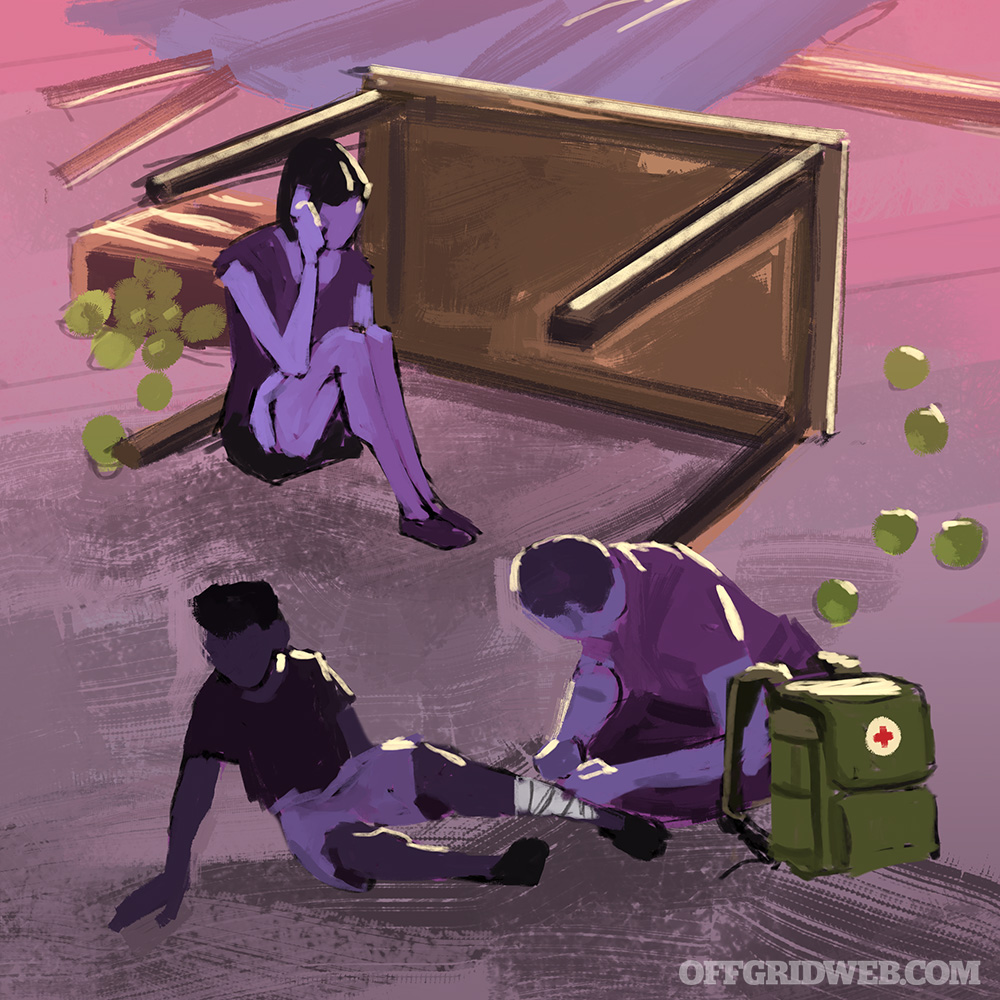
As Sean McKay of Element Rescue likes to say, you’ll find three types of victims at mass casualty scenes like this. The first kind is going to die no matter how good of a job you do. The second kind is going to live no matter how much you screw it up. The third kind may live or die depending on your actions — it’s what you do right now that makes a difference.
First, is anyone spouting blood from their arms or legs? If so, that’s one of the simpler and more impactful things for you to address.
When walking around, check first on people who aren’t moving or are nonresponsive. People may need to sit up to be able to breathe properly — if that’s the case, gently help them sit up. Sitting people up and/or turning them onto their side can keep victims from aspirating if they vomit. If a spinal injury is suspected, keep movement to a minimum to avoid exacerbating that injury.
If there’s an injury in “the box,” i.e. the victim’s torso or abdomen, they need evacuation to a hospital right away. There won’t be much that you can do until you get a surgeon involved.
Even if someone looks good on the outside, they may be suffering from internal bleeding that you can’t see. If they’re conscious, ask simple questions. See if they can remember what their name is, what year it is, or who the president is.
If you do find someone who clearly can’t think straight, they may be suffering internal bleeding or swelling of the brain. They need help right now, in a hospital, and there’s not much you or even the paramedics can do for them in the field. Make sure the first responders know about these victims when they get there or drive the person to the hospital if that’s feasible.
For more information on field triage, check out my past article on the SALT method.
B-Con Basics
When it comes to medical gear, I carry the M-FAK Mini First-Aid Kit from North American Rescue. It weighs only 13 ounces and is about the size of a small 6-inch sub. I’m not a medic and have zero advanced medical training, but I do know the basics of bleeding control (B-Con) and am comfortable using the tourniquet, hemostatic gauze, and trauma dressing included in the kit. Even if I’m not carrying a pistol I’ll have the M-FAK with me, knowing that statistically it’s more likely that I’ll have to help someone than shoot someone.
In my vehicle, I store a larger Public Access Bleeding Control Twin Pack, also from North American Rescue. It has two sets of the basic B-Con supplies as well as some additional goodies to help prevent victims from going into shock. I never take this out of my vehicle, and that way I know it’ll be there when I need it. Because I live in Florida and it gets hot in the vehicle in summer, I store the medical supplies inside of a small Yeti hard-sided cooler that I also keep in my vehicle full-time. Even without any ice inside, the temperature inside the cooler stays better regulated during the day so I worry less about the heat potentially degrading items.
Realism vs. Escapism
There are lots of complex technical detours we could take here, including considering whether or not you should enlist the help of others, whether you should try to shoot the driver or disable the vehicle, and other potentially nitpicking questions. But the fact is that during a mass casualty incident, there are too many unknown variables, and those variables will be changing in real-time under your feet. In this case, those complex what-if questions become a bit like teats on a bull. We’re fooling ourselves if we think we can flawlessly predict the actions of others. If we’re truly mentally prepared, then we don’t have to worry about anticipating events or what might happen. We’ll be ready to trust our gut instincts and respond to what we see in front of us when we see it.
The thing is, there’s more to preparedness than just having the gear and a weekend class under your belt. Most of us prefer to simply buy new gear, instead of learning how to master our existing gear or (better yet) get along without any gear. Most of us would rather materially gain than train, unfortunately.
If you haven’t been privileged to enjoy realistic training that had a large stress inoculation component, you may well spend the first seconds or minutes after disaster hits just staring wide-eyed, trying to comprehend what you’re seeing. This isn’t an insult or a criticism, and it doesn’t say anything bad about you if that’s the case.
Keep in mind that there’s a difference between being trained to perform a task and actually being ready and primed to do it when it counts. There’s a huge distance between qualified and proficient. As the saying goes, good decisions come from experience. And experience usually comes from initially making bad decisions. It may not be pretty or even a linear progression, but you’ll get there if you keep at it.
For example, when I was deployed for search-and-rescue operations at the Champlain Towers (Surfside) condominium collapse in Miami, I was fully qualified and deserving to be on that scene. However, mentally I wasn’t prepared to absorb the complete picture of what an actual mass casualty incident looked like. By contrast, most of my training scenarios had been clean, sterile, and progressed in a way that made sense. This was messy and confusing, as if a smoke or a haze were partially obscuring not only what I was trying to see, but what I was trying to think about. Take what I learned from my experience to better prepare yourself for when you get your shot at it.
Get Involved
Try to serve as a volunteer firefighter in your town. This may provide you with good training and valuable skillsets, besides valuable opportunities to see and help human beings in distress. The more you’re able to serve in stressful and chaotic situations, the better you’ll get at cutting through the noise and thinking clearly to accomplish your mission — if you make the effort to learn from your mistakes.
If you can’t serve as a volunteer firefighter, consider opportunities to volunteer with your local police force, hospital, or Community Emergency Response Team. See things that make you uncomfortable so that you can act right in the future on what may be the worst day of your life.
For more information on protecting against vehicular attacks in the future, FEMA released a great document on preventing terrorist attacks in general, which includes specific sections on vehicular-ramming attacks. Understanding this document could help your town, city, or event prepare for this possibility.
The author would like to thank Sean McKay of Element Rescue and Scott Chappell of the Florida State Fire Marshal’s office for their assistance with this article.
First-Aid Instructor Kerry Davis’ Approach
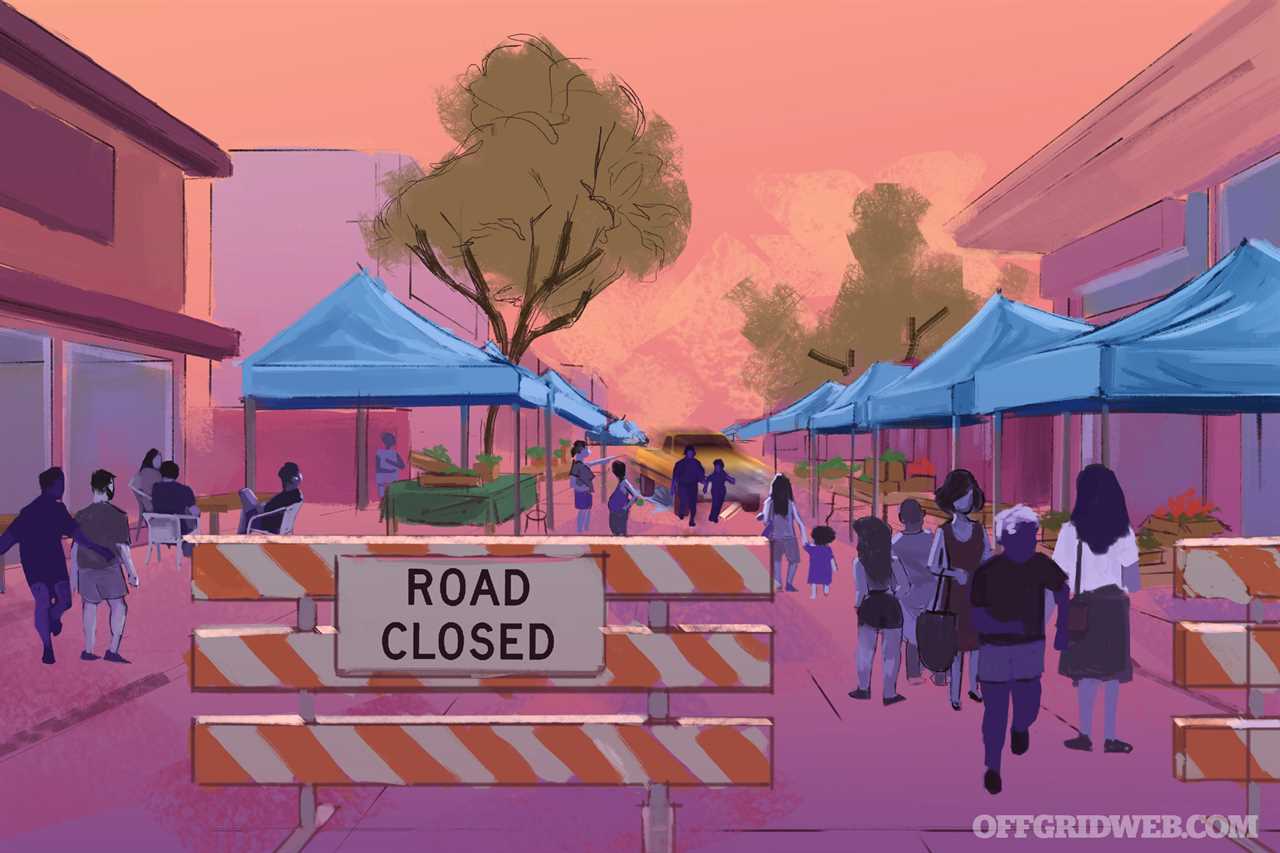
Preparation
Can anything really prepare you for a mass casualty incident like this? Unless you’ve seen the types of injuries you’ll see here before, not really. Simply put, it’ll be a shock to your system. Now let’s say you’ve never seen these types of injuries in “real life” before, but you’ve had some medical training and saw them in slideshows or even in moulage. Are you prepared? Absolutely. Why? Because you’ve had some experience with them through stress inoculation and you know how to deal with them through that training.
What if you don’t have any medical training? Could you do more harm than good? Possibly so. Without understanding how the body works, you could actually make certain injuries worse. Also, acting outside of your scope of training can increase your liability in these types of situations. However, you can always show willingness to help out and can render aid when directed by other medical personnel on scene. But, to be an even greater asset, I can’t emphasize enough how important it is to have medical training. There are a lot of different courses the average citizen can take that’ll give them a basic level of understanding on not only how to treat a traumatic injury, but why they’re doing what they’re doing.
The very basic American Red Cross or American Heart Association First Aid/AED/CPR courses are a great place to start. For an added bit of information in traumatic injury aid, add a Stop the Bleed training course (www.stopthebleed.org). It’s very basic at four hours but will cover ways to stop the most prevalent killer of humans, massive life-threatening hemorrhage. For those who want to learn more and don’t need to be a medical professional, here are a couple of really great options. First is our Dark Angel Medical Direct Action Response Training (DART) course. This 16-hour course covers everything from minor boo-boos to environmental medicine to life-threatening injuries. It culminates with hands-on practical skills and trauma assessment scenarios. It’s a lot of information but equips the student to be better prepared in the event of life-threatening emergencies. This information is built upon in our DART 2 course, which is a two-day scenario-heavy course. We also offer a one-day Basic Trauma Management course for corporate settings, as well.
The second is Lone Star Medics’ Dynamic First Aid. This one-day class is a great starting point, but their course catalog is both extensive and impressive. They have a wealth of knowledge and can prepare everyday citizens for the worst. All of these courses cover a great deal of information while still staying at a basic level of training.
As I have said many times, “Get the training. Get the kit. Be the difference.” So, you have the training. What now? What kind of trauma kit or medical supplies should I carry on my person to deal with these types of injuries in this type of mass casualty incident? At a bare minimum, here are what I like to call my “Top Five” items to have in a trauma kit:
- Tourniquet(s): multiple, scientifically proven, i.e. C-A-T Gen 7 or SOF-T Gen 5
- Gloves: nitrile, at least two pairs
- Hemostatic gauze: QuikClot Combat Gauze or ChitoGauze XR Pro
- Compression bandage
- Chest seals: HALO Vented IFAK or HyFin Compact Vented
Having these few items in your on-body med kit can literally make the difference between life and death. It’s not a lot of weight, there are multiple ways to carry it, and you’ll never miss it if you don’t need it.
Now that medical is covered, what about non-medical? Perhaps a good handheld flashlight is a good thing to have in the event the scene plays out in low-light situations. Also, a good note pad and pen to jot down pertinent info like descriptions of subjects, vehicles, etc., as well as interventions, vital signs, allergies, meds, and last oral intake of victims you may be assisting.
As I said earlier, preparation is key, and part of that preparation is in making these soft targets hard targets. To do that, reach out to your local officials and work with them and the emergency planners to recognize any potential chink in the armor. Harden access routes to prevent any attacks while still being able to have viable egress routes in the case of an emergency. A solid concrete barrier is much better than metal fencing in preventing an attack but can become a hindrance when emergency vehicles need access to or egress from the protected area.
Prior to heading to an event like this and recognizing the potential for a mass casualty incident to unfold, look into similar events that occurred in the past. When delving into those past events, look for similarities/patterns of attack. Also, look at it from a different perspective and see if it was just an exploitation of an opportunity/vulnerability. This could help you plan where you’ll go and where you and your family will be staged during this event, which makes you better prepared than the average citizen.
In viewing footage of some of the more recent vehicle attacks around the world, one of the most common things we’ve seen people do is to run away from the vehicle in a straight line. This is a primal self-preservation instinct — run away from what’s trying to kill you. Unless the vehicle becomes inoperable via being stuck or striking a large object, the chances of outrunning a homicidal driver are slim to none. What can you do? If you recognize that you’re in the path of an automobile, move laterally, very quickly.
In these types of situations, the body alarm response is in overdrive for both the victims and the driver. Use this adrenaline-fueled situation to your advantage and their disadvantage. The driver is more than likely fixated on only what’s in front of them and will continue on as straight a line of attack as possible. In the videos we’ve seen, the drivers may be swerving a bit but not at any right angles. Make your egress route at a right angle, laterally, away from the line and into/behind some solid cover, which would stop a vehicle hell-bent on destruction and death.
On Site
Situational awareness seems to be at an all-time low. Just take a look around on a daily basis and see how people are completely engrossed in their devices. Pretend you’re the antelope at the watering hole on the plains of the Serengeti and you know the big, bad lion is lurking around, just waiting for you to slip up and have a momentary lapse in situational awareness. Give yourself the best vantage point possible with multiple routes of egress in case something goes sideways. Keep your head on a swivel and not in your social media apps. Look for anything out of the ordinary and trust your gut instincts. If the vehicle or behavior of people don’t fit the scene, then find someone who can do something about it and let them know. Posting it to your social media doesn’t help anyone.
Crisis
As I recognize that an attack is occurring, my first priority is my safety and the safety of my loved ones. Two things give us safety: time and distance. I want as much distance between me and the “bad thing” as possible and if the “bad thing” is coming my way, I want it to take as long as possible to get there. Once my personal safety has been established, I need to ascertain if the scene is safe. If the scene is safe and the threat is no longer present or has been neutralized, I need to observe for any casualties and help those who I can help while maintaining good situational awareness and ensuring that emergency services are coming.
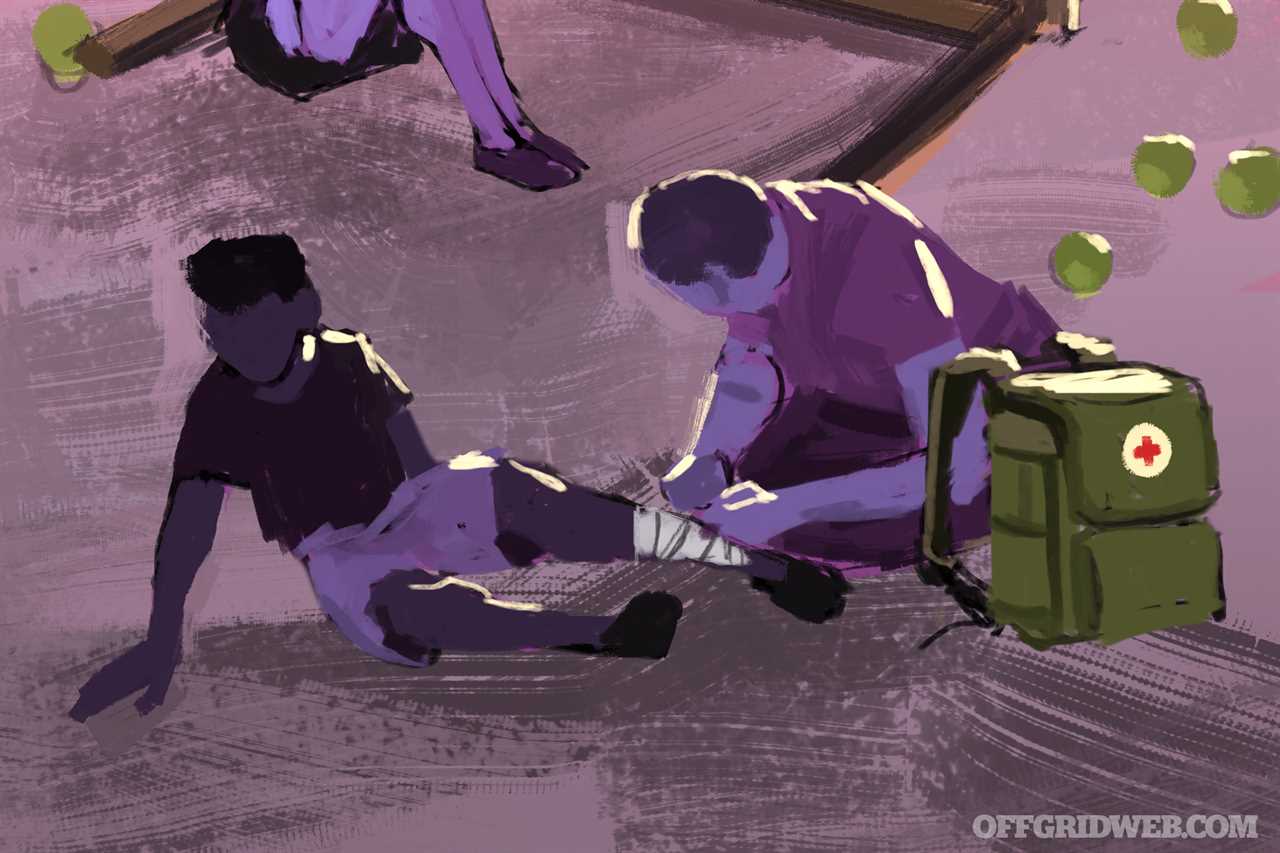
As I search for casualties, if I can safely render aid right there at the point of injury, I’ll do so. I’ll only attempt to move them if the area that they’re in is too dangerous for them and myself. What am I looking for in triaging and treating patients? We look for the “Big Killers:” those casualties with massive hemorrhage, airway problems, breathing difficulty, weak or absent radial pulses, and those with the inability to answer questions or follow commands. These are typically the easiest types of injuries to find and fix and require less complex solutions and less resources to help.
What if you run out of your own medical supplies and you have to improvise? Know what works and what doesn’t. Improvised tourniquets have a dismal success rate unless you have some sort of mechanical advantage (windlass), and, even then, the success rate isn’t great. This is why it’s critically important to not only know how to do something, but why you’re doing it. Now, to the surrounding area and bystanders. If you have someone walking around in a daze, give them a simple and specific task to complete. You’ll accomplish a few things by doing this. One, you’ll temporarily take their mind off the horror they’ve just witnessed and, two, you’ll make them feel useful. These folks are your “force multipliers” and can give you multiple sets of hands so that you can successfully triage the casualties.
In the instance that you are front and center when the attack is taking place and you’re a concealed carrier, remember, this isn’t a movie. This is real life. Shooting is more about thinking than just pulling the trigger. Before you skin that smoke wagon, perform a rapid risk-benefit analysis. If you engage a moving vehicle, what are your chances of disabling it or the driver? What are the chances a well-intentioned round could strike an innocent bystander? What are the chances that any authorities there could think that this is now a multi-pronged attack conducted by multiple attackers and engage you? I’m not telling you what to do, only to think before you do anything.
Conclusion
Preparation is one of the cornerstones of survival and is a key to being an asset in a mass casualty incident rather than being a liability. Do you want to be the one holding a phone videoing the scene, or do you want to be the one actually working to solve the problem? Sadly, it seems that many people out there are in the former category rather than the latter. But is that a conscious choice or is it a decision borne of ignorance and not knowing what to do? That emphasizes the need to get educated and equipped so that the response is one of action rather than inaction.
We see quite a bit of info on these types of attacks from the media, and they all seem to focus on one thing — soft targets. Evil is a coward, doesn’t like a challenge, and looks for the easy way. It’s our job to make it harder for evil to win. At the end of the day, we understand and recognize that we can’t stop evil, but we can do a few things to mitigate its effects on society. So, go get that training, carry solid equipment, and have the mindset and ability to help when the time chooses you. It all takes time and effort, but, when the situation is dire and you’re ready, you’ll never regret it. The return on that investment is paid out in birthdays, graduation dates, weddings, and grandchildren.
Meet Our Panel
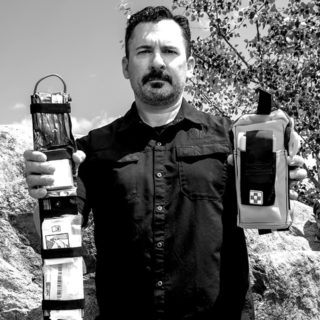
Kerry Davis
Kerry Davis is a 30-year veteran of the medical field. His experience began in the USAF as a flight medic and in the civilian sector as a paramedic and a critical care/emergency room RN. He has worked as instructor with Magpul Dynamics and has been an instructor at Sig Sauer Academy since September of 2011. In addition to that, he’s the owner and founder of Dark Angel Medical, which was started in August of 2011. darkangelmedical.com

Andrew Schrader
Andrew Schrader is a commercial pilot and Urban Search and Rescue (US&R) Structures Specialist. He was deployed by the State of Florida for rescue operations following Hurricanes Hermine (2016), Irma (2017), Michael (2018), and Dorian (2020), in addition to the Champlain Towers (Surfside) condominium collapse in 2021. Reach out to him at [email protected] or on
social media at @reconresponse.
Related Posts

Lessons from a Soviet Union Collapse & Chernobyl SurvivorAfter living through the collapse of the Soviet Union and the fallout of Chernobyl, Greg Mihovich understands the value of preparedness.
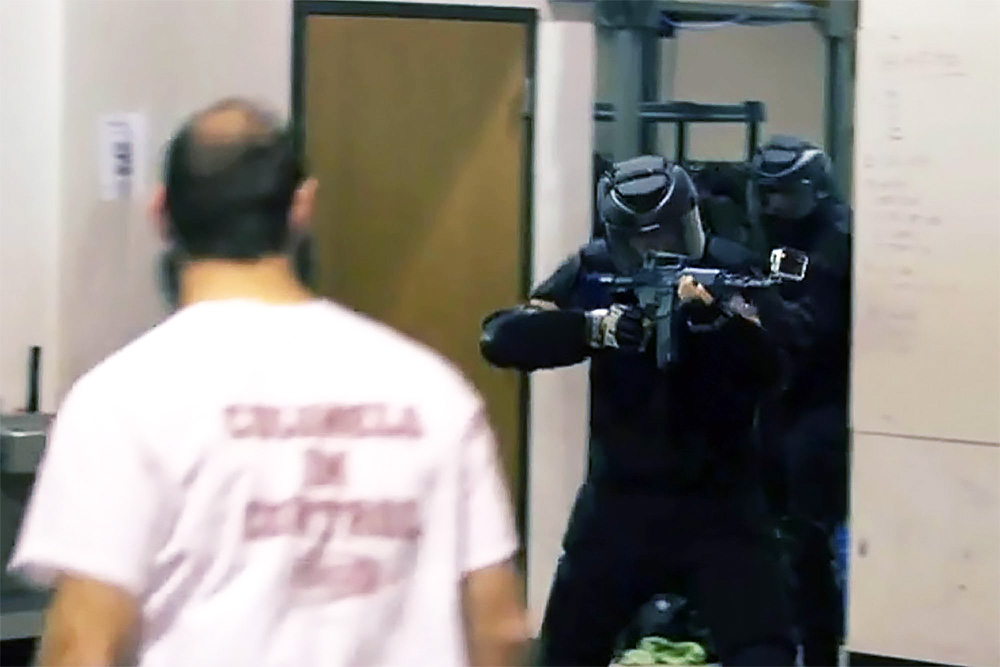
Fools Rush In: Considerations for Engaging an Active ShooterIn this article, we examine how to best survive and solve active shooter scenarios and other complex deadly force encounters.
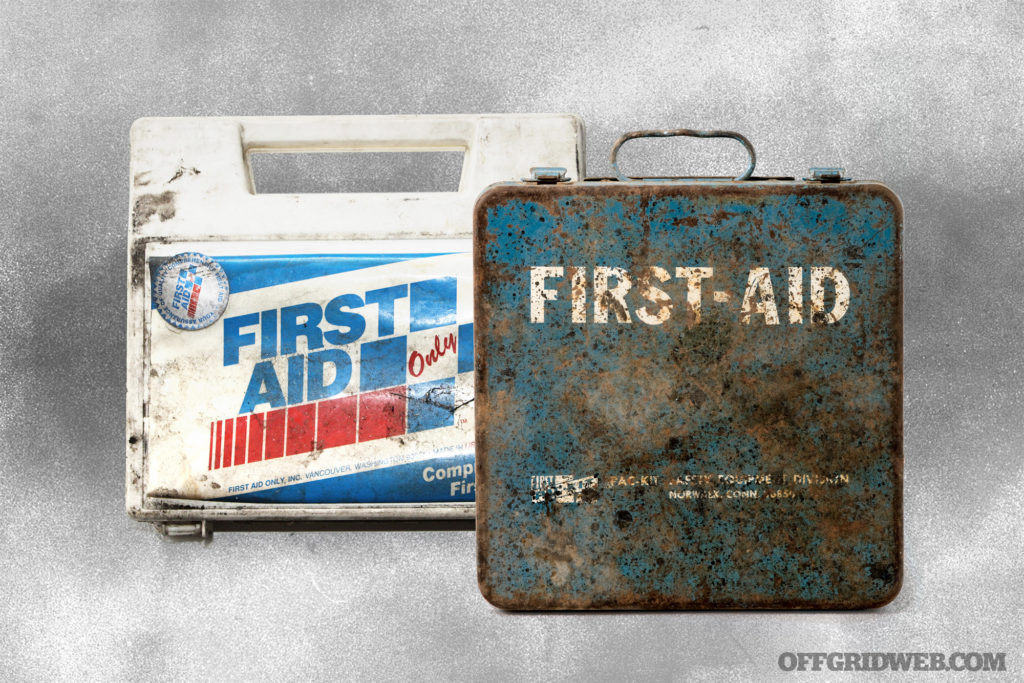
How Outdated is Your First Aid Kit?If you put together a trauma medical kit or individual first aid kit (IFAK) several years ago, it may be outdated or expired.
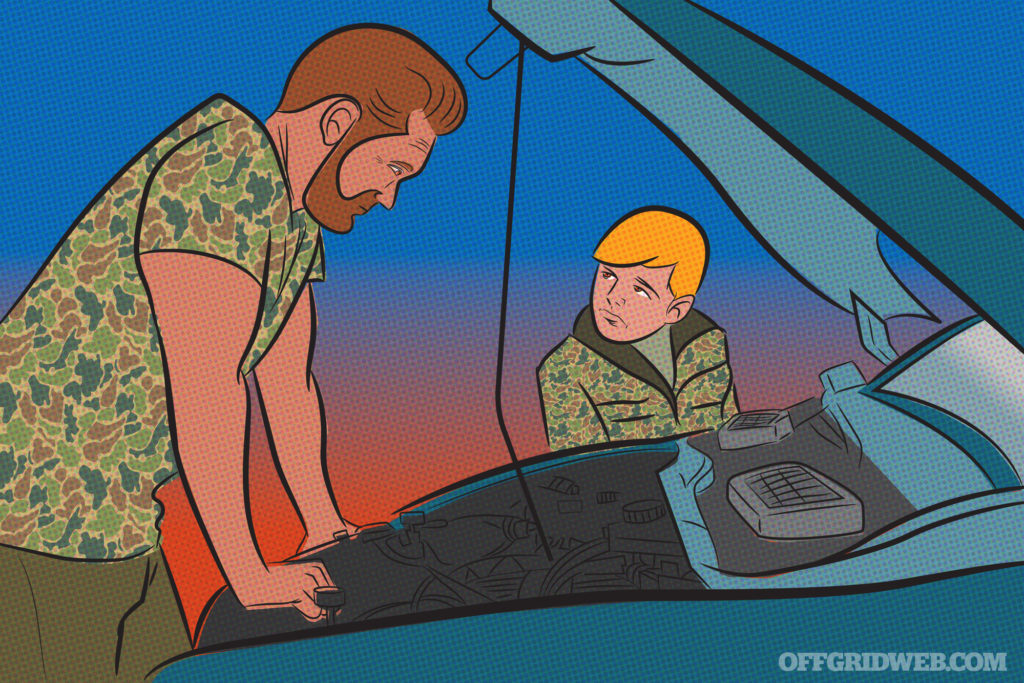
What If You're Stranded on a Remote Backroad?Preparation and planning can go a long way, in case you get stranded during a road trip. The key to success is planning for the unexpected.
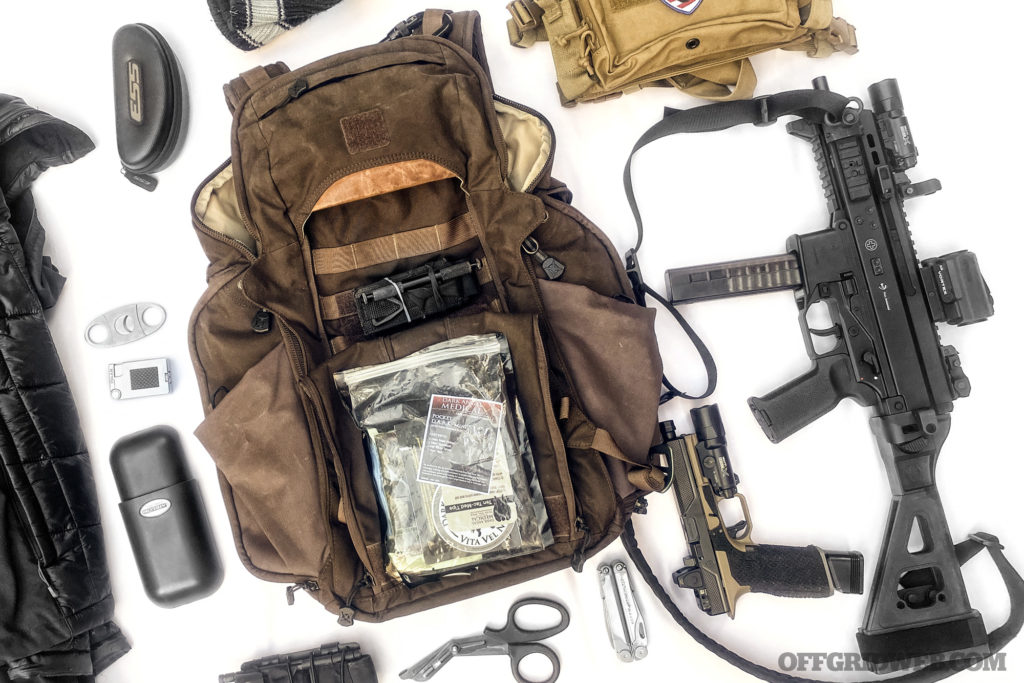
Bag Drop: Personal Security Detachment BackpackThe point of Personal Security Detachment (PSD) is to offer close protection of a high-value individual. You don’t want to look heavily-armed.
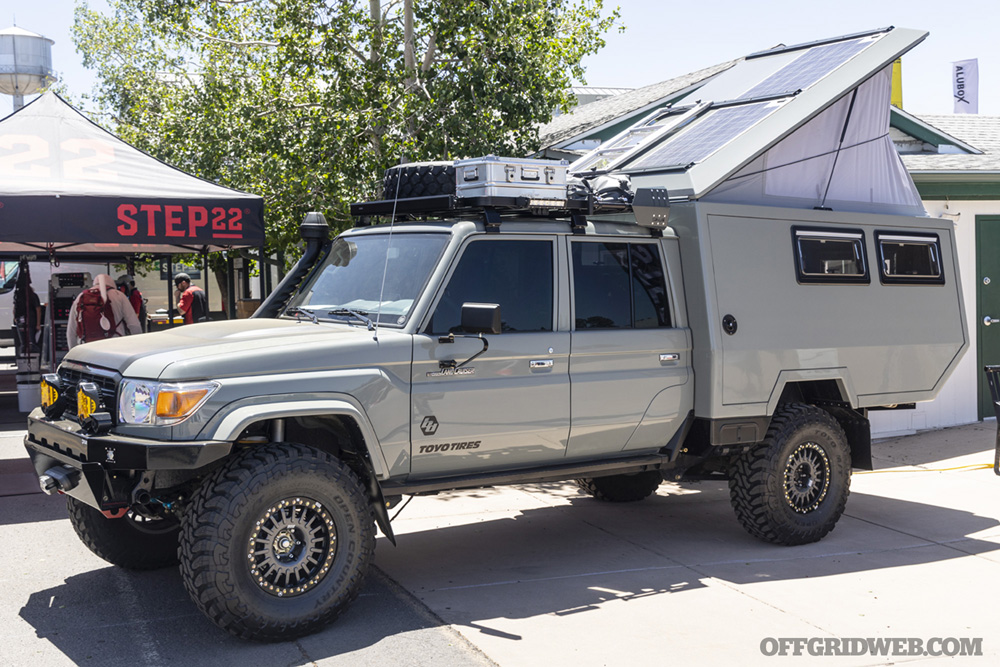
Gallery: Trucks and SUVs of Overland Expo 2022We stopped by Overland Expo 2022 and took photos of some of the the coolest Jeeps, trucks, and SUVs at the Flagstaff, AZ event.
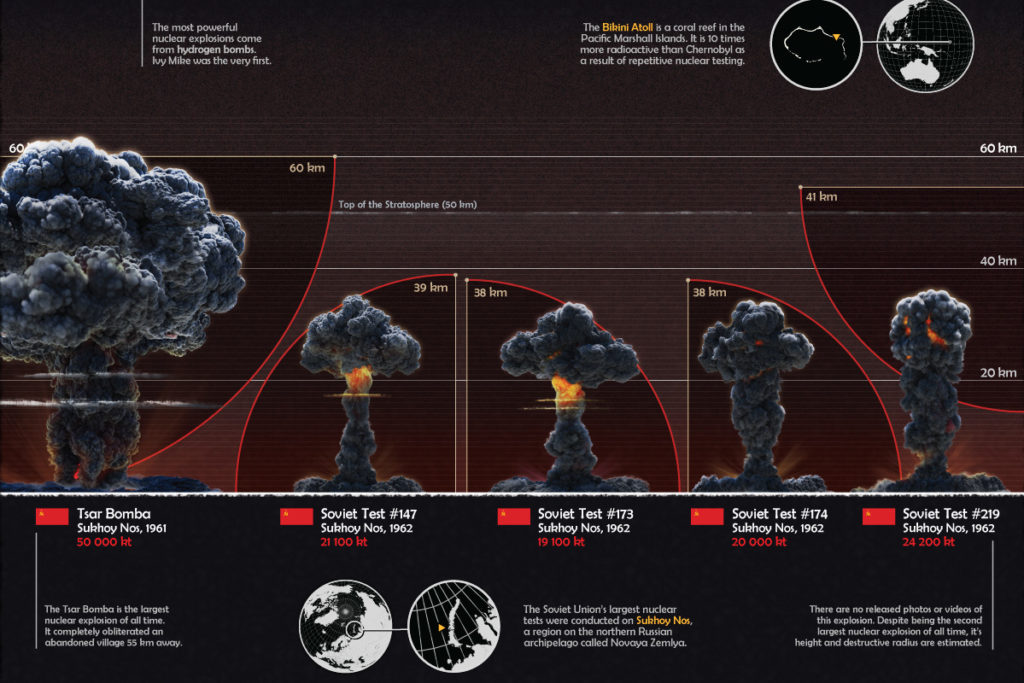
Infographic: Visualizing the 10 Largest Nuclear ExplosionsThis infographic from Visual Capitalist compares the 10 largest nuclear explosions in history, including yield and destructive radius.
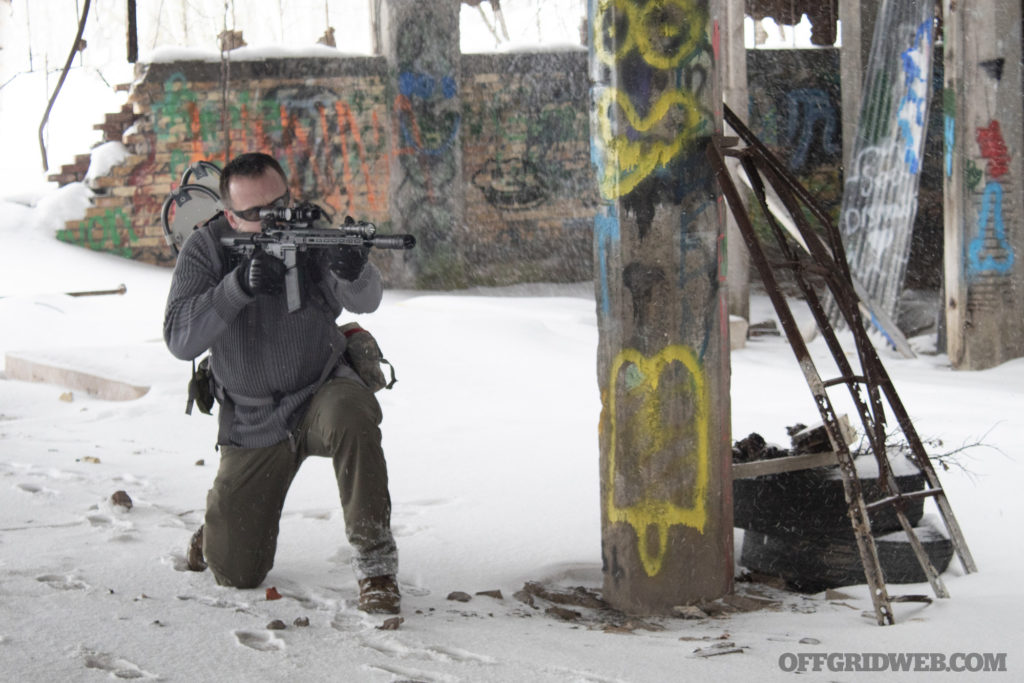
Tailor-Made ARs Part 2: A Veteran's General Purpose AR-15Even though I had assumed I knew enough, almost everything I had understood about a general purpose AR-15 had changed in a handful of years.
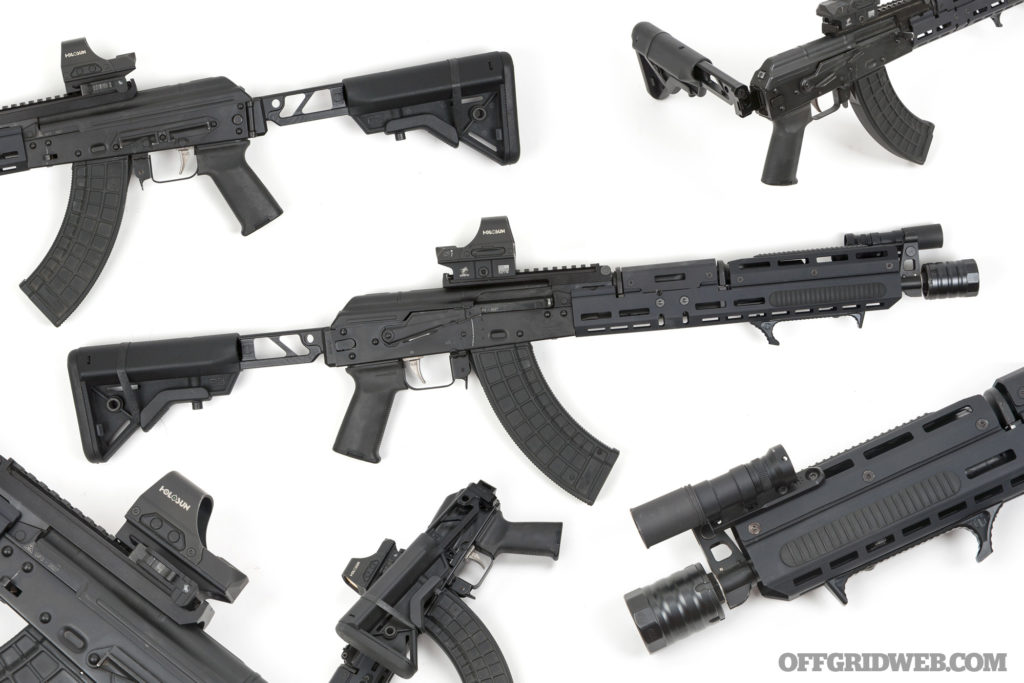
PSA AK Updates: VLTOR Handguard & JMac Customs Folding StockI'm aware that some purists will sneer at this PSA AK because it's made in the USA, that doesn't bother me a bit.
The post What if You Witness a Mass Casualty Incident? appeared first on RECOIL OFFGRID.
By: Offgrid Staff
Title: What if You Witness a Mass Casualty Incident?
Sourced From: www.offgridweb.com/survival/what-if-you-witness-a-mass-casualty-incident/
Published Date: Sun, 29 May 2022 20:24:22 +0000
-------------------------------------------------------------------------
Did you miss our previous article...
https://outdoorsnewswire.com/survivalist/20-best-of-the-best-skinning-knives
 CampingSurvivalistHuntingFishingExploringHikingPrivacy PolicyTerms And Conditions
CampingSurvivalistHuntingFishingExploringHikingPrivacy PolicyTerms And Conditions
